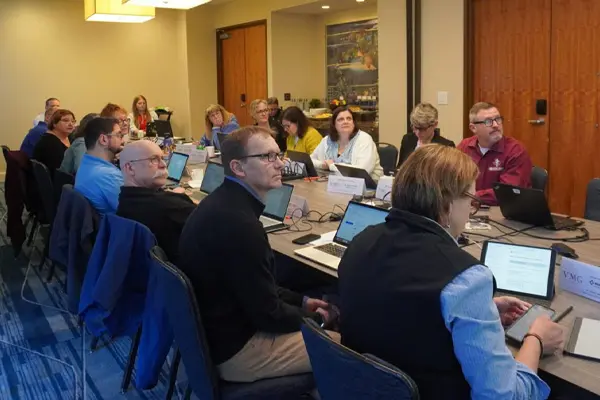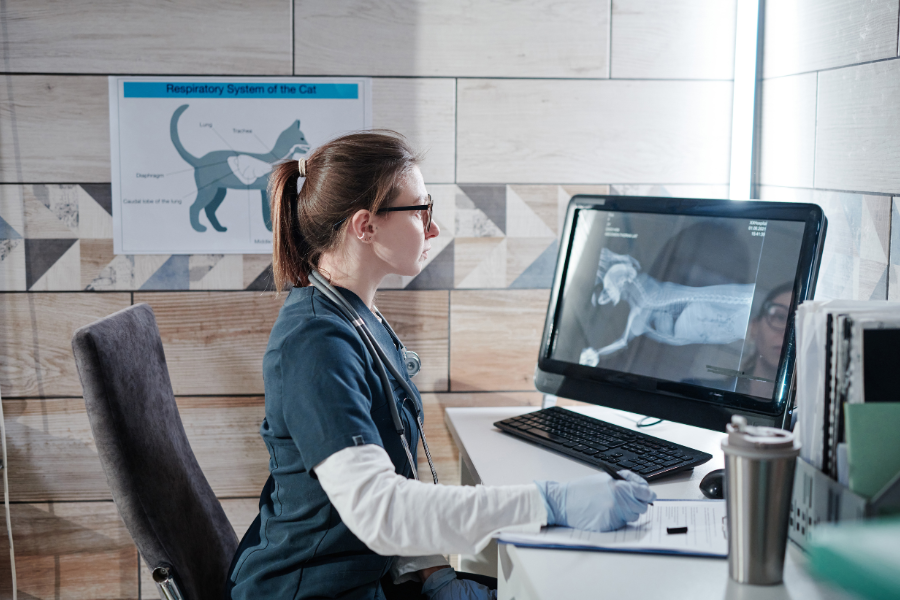As we begin to grapple with the incredible shifts in our profession, economy, and society over the past three years, veterinary medicine stands at a crossroads. There’s ample opportunity—along with three separate, yet related and equally critical, challenges.
- We have a workforce challenge stemming from declining labor participation, high staff turnover, and the need for more veterinary services (to name a few root causes).
- We have a workflow challenge due to unaddressed efficiency barriers that have been worsened by the global pandemic.
- We have a well-being challenge rooted in difficulty achieving consistent work-life balance and positive team culture—and evidenced by declining engagement and career satisfaction.
With so many complex, systemic factors driving these challenges, the tools of our own trade come in handy. Taking a SOAP (Subjective, Objective, Assessment, and Plan) approach allows us to gather the subjective and objective data needed to effectively assess and diagnose these issues, then execute an efficacious treatment plan or strategy to address them.
In this series, we’ll examine what’s happening in each of these areas, what steps you can take to embrace new opportunities toward long-term success—and how a VMG membership can support you on that journey.
The workforce challenge
Labor shortages are currently plaguing a number of industries, and veterinary medicine is no exception. According to the U.S. Chamber of Commerce, U.S. businesses added an “unprecedented” 3.8 million jobs in 2021. Meanwhile, over 4 million people are quitting their jobs every month in what has been called the Great Resignation. The combined effect of new jobs being created with workers quitting their jobs in droves creates a significant workforce challenge.
Another significant side effect of the pandemic has been an unprecedented decline in the U.S. labor force participation rate. A recent report estimates that roughly 3.8 million workers have voluntarily dropped out of the labor force, simply saying “no” to working. This drop is a big factor helping to explain the workforce challenges every industry is feeling. Moreover, the rampant turnover signaled by the large numbers of people quitting their jobs reinforces these challenges.
We’re seeing a similar trends in veterinary medicine. According to the 2021 AVMA Veterinarian and Practice Owners Survey, labor force participation amongst veterinarians is down and even more concerning is that 44% are considering leaving the profession entirely.
In addition, turnover is also a significant component of the workforce challenge for veterinary practices too. According to the AVMA, turnover in veterinary medicine is among the highest of all healthcare professions. The average turnover for DVMs, for example, is 20%, which is twice that of an MD. For veterinary technicians, turnover jumps to nearly 50%, which is also higher than that of an RN.
Finally, as workforce shortages increase, the demand for veterinary services is only intensifying. The average number of appointments increased 4.5% from 2019 to 2020, and 6.5% from January to June 2021. Furthermore, The Bureau of Labor Statistics projects a 17% job growth rate for veterinarians by 2026, which is twice as fast as all other occupations.
All things being equal, we can hope that the job market will calm down over the next 6-12 months due to slower economic growth, a (hopefully) fading pandemic, and more prime age workers returning to the office. But it would also be wise to consider this shortage, particularly as it relates to retirements, a preview of the future demographic changes to come, which will place further burden on an already tapped veterinary medicine market. In other words: this isn’t going away.
The workflow challenge
Practice productivity took a major hit due to the pandemic. In 2020, the average efficiency of a veterinary practice declined by 25%, and it took up to four minutes longer to complete the typical veterinary appointment (AVMA). Those minutes add up: if you see 200 patients/week and each one takes 4 minutes of extra time, you’ve just tacked on 13 hours of additional workflow.
At the onset of the pandemic, practices continued operating as essential businesses, addressing the most urgent cases. At the same time, clients who were spending more time at home had newfound energy and resources to seek treatment for their pets’ health issues. The backlog grew, staff numbers kept shrinking, and workflow efficiency started crumbling.
It’s not that people aren’t working their absolute hardest; they’re simply battling new challenges related to COVID, supply chain disruptions and more. Plus, many positions are not effectively utilized, especially our veterinary technicians, as operational bottlenecks reach critical levels.
Even if your practice sees growth, the work that got the team there might have been significantly less efficient than before. And that added effort only serves to drive more talented workers out of practice – and potentially the profession.
The well-being challenge
The challenges with veterinary well-being are intrinsically linked to the challenges with workforce and workflow. Fewer veterinary professionals are tackling growing workloads in an environment that has become more stressful and demanding. And while many veterinarians are working longer hours to bridge the gap in staff and productivity, 30% would prefer to work less hours, even for lower levels of compensation. The result? Escalating burnout and declining well-being.
And while burnout exacts a mental health cost, it also takes an economic toll. A recent study published concluded that the attributable cost of veterinarian burnout is between $1 and 2 billion annually in lost revenue. The more stress veterinary professionals experience, the more burnt out they can become, resulting in reduced efficiency at delivering veterinary care, lowering both individual earning potential and practice performance.
A lack of work/life balance has exacerbated existing mental health challenges for many in the profession, increasing compassion fatigue, secondary traumatic stress, and burnout. These factors are driving more and more veterinary professionals to consider leaving the profession entirely.
It’s time to get creative (& look within)
How can practices – and the profession as a whole – successfully deliver veterinary care to patients in need, keep veterinary care affordable, and support a thriving workforce? By designing an effective treatment plan that addresses the root causes across our workforce, workflow, and well-being challenges in a unified and cohesive way.
For example, if we only focus on expanding the veterinary workforce, the root causes of inefficiency remain. Adding more people won’t automatically address the cultural and staff engagement issues that can lead to high turnover and burnout, either.
What if practices invested in workflow optimization as they simultaneously worked to bolster team culture and leadership quality? One effort reinforces the other. Adopting technologies like automation, for example, helps to:
- Simplify processes
- Increase visibility
- Eliminate the need for human intervention in repetitive tasks
- Free up more time for value-added work
By tackling the workflow challenge with new tools that boost productivity, practices can also depend on fewer people, thereby addressing both workforce and workflow problems in one fell swoop. And by making it easier to be a veterinary professional, these solutions also support greater work/life balance and overall well-being.
It takes careful planning and strategy, but practice owners have an opportunity to leverage both new and existing solutions to better support their teams and improve veterinary care, building a better practice and a healthier profession for the long term.
But no one should have to do this alone.
For more information on how to take an integrated approach to improving practice health and how being a part of a community like VMG can help, read Part II of our series.







